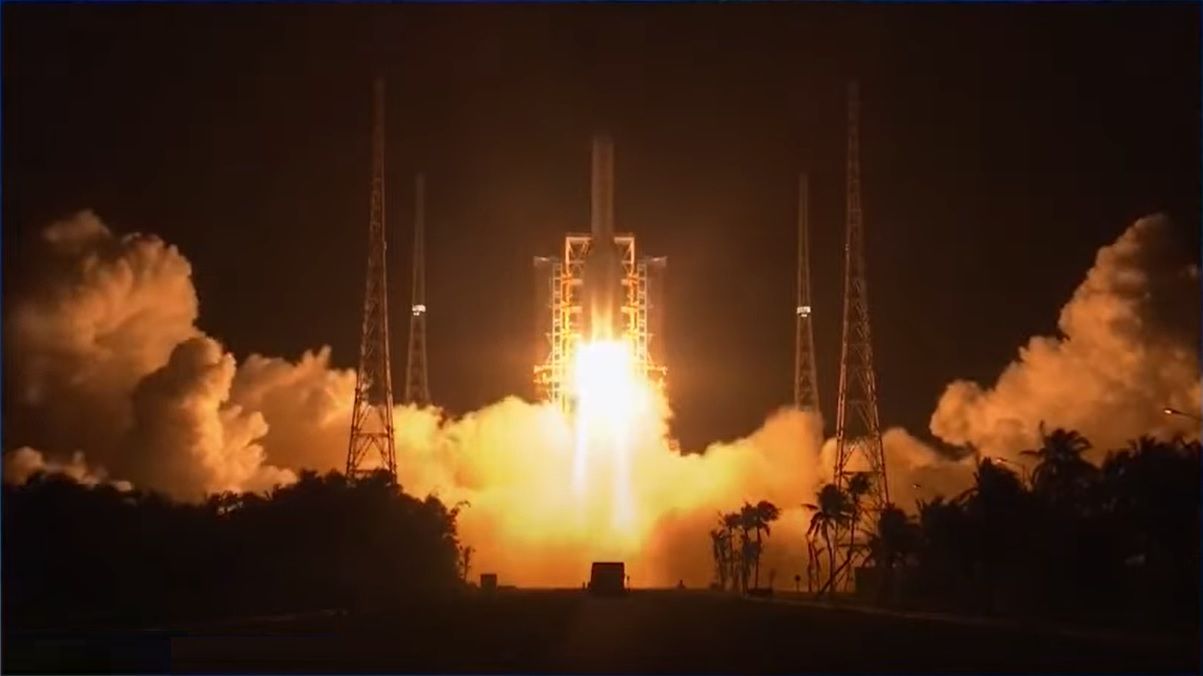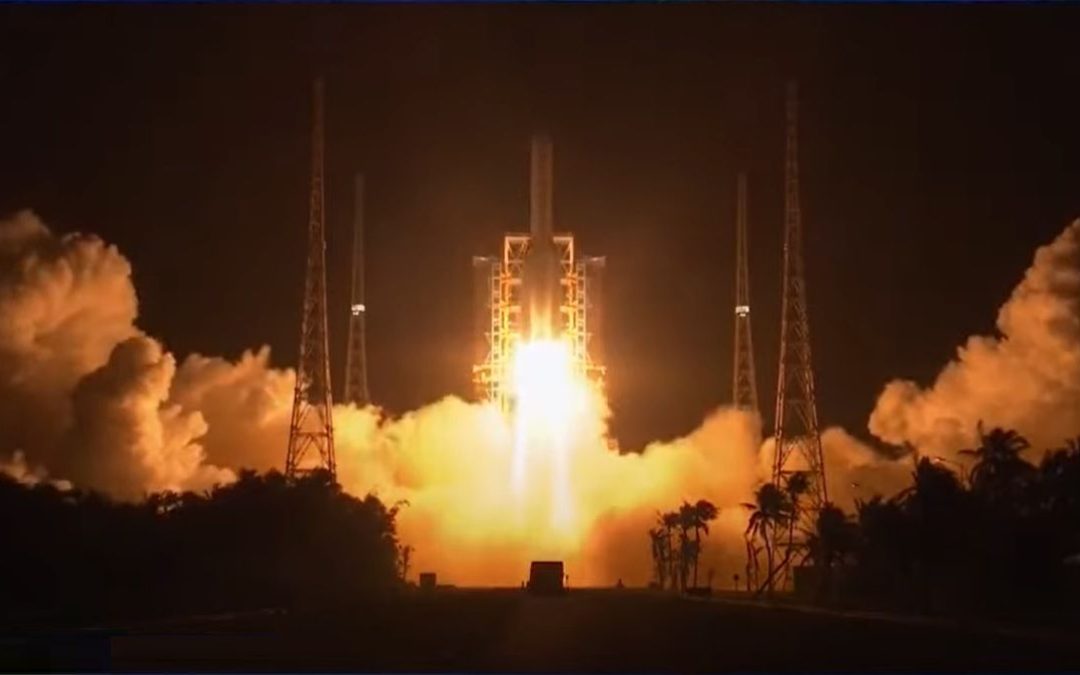
China has successfully launched its next chapter of robotic lunar exploration. The Chang’e-5 mission blasted off on a Long March 5 rocket from the Wenchang Satellite Launch Center last night.
The Chang’e-5 mission contains an orbiter and a lander, which in turn contains a return capsule. The mission is heading towards Mons Rümkerin, an old volcanic peak in the Ocellanus Procellarumin lava plateau, where terrain shows that the Moon has had volcanic activity billions of years ago. A sample from this region is hoped to reveal important new scientific information about the Moon’s geological past.
Once the lander arrives, it will start drilling in the soil. A robot arm will then collect a few kilograms of Moon rock from the hole and place them in the return capsule, which will then blast back up to the orbiter. The orbiter will then return back to Earth with the sample.
Unlike other recent sample-return missions bringing back samples from asteroids (Japan’s Hayabusa-2 and NASA’s OSIRIS-REx), the mission timeline of Chang’e-5 is going to be super quick. The lunar landing, sample collection and lift-off will all happen within one lunar day so that operation during the cold lunar nights can be avoided. One lunar day corresponds to roughly two weeks on Earth. The journey between the Earth and the Moon takes some 112 hours. This means that Chinese scientists will get their lunar samples in time for Christmas!
Chang’e-5 was originally already planned for 2017, but problems with the Long March rocket delayed the mission until this year. Already back in 2014, a test mission called Chang’e-5 T1 was conducted to test the atmospheric re-entry. The European Space Agency will support with tracking assistance during the re-entry when Chang’e-5 returns with the lunar sample.
A second lunar sample return mission, Chang’e-6, is planned for 2023 or 2024.
For more information about Chinese missions to the Moon and other currently ongoing space adventures, check out Warp News’s new e-book – The New Space Race – published last week! https://www.warpnews.org/premium-content/e-book-the-new-space-race/
(Photo credit: China Global Television Network (CGTN))





